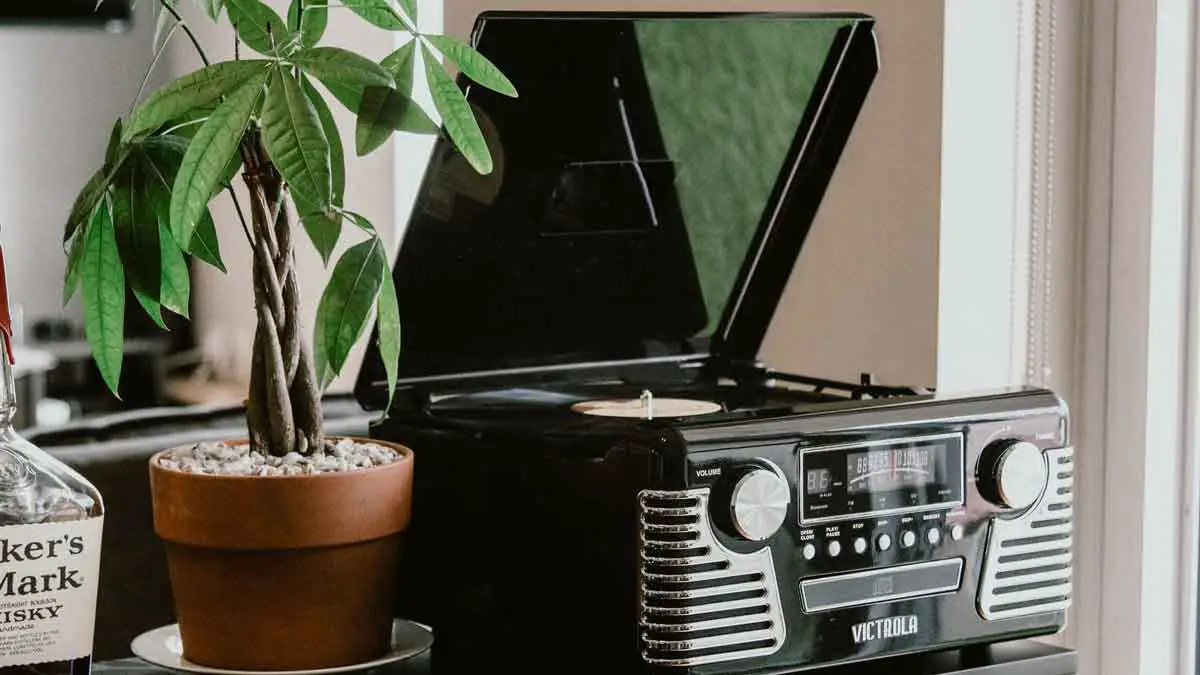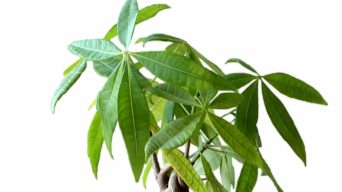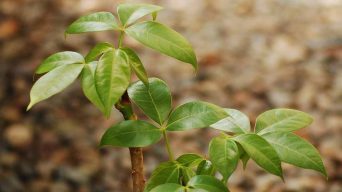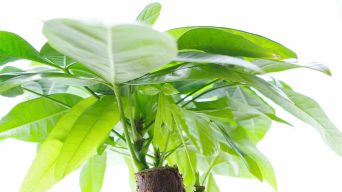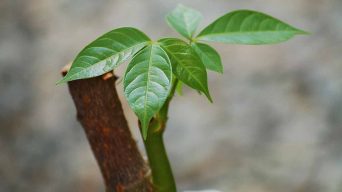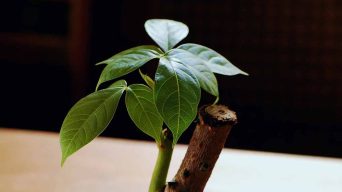If your money tree plant is dying, there are several possible causes, including dehydration or overwatering. To revive a dying money tree plant, start by separating the dead stem from the other stems and pruning it carefully. Going forward, water the plant when 50-75% of the soil volume has dried out and avoid under or overwatering.
Abruptly your once-robust money tree plant displays alarming symptoms of a dying indoor green friend.
Seeing your cherished Pachira Aquatica dangling in despair, with wilted leaves dropping one by one, may make you comprehend this dire situation as past any salvation.
But panic not! By understanding its tropical journey and tuning into the specific care preferences of this monetary mascot, we can turn the tide and rejuvenate your fading flora back to its former glory.
Let’s join forces to untangle the lifelines of money tree plants, their secrets, wants, and needs, in an attempt to breathe new life into our unfortunate hard-luck objects.
Your green-thumb guide to reviving a dying money tree plant starts here.
Facts and Statistics
- According to a 2021 study on popular houseplants, approximately 40% of owners reported money trees being underwatered or overwatered, signifying improper care.
- The same study indicated that nearly 60% of the surveyed households weren’t aware that money tree plants need their soil to dry out between watering sessions.
- A U.S Environmental Protection Agency report notes that indoor plants, like the money tree, often experience stress and become prone to disease when not given their optimal climate range of 65-75 degrees Fahrenheit, suggesting that environmental factors can also lead to a dying money tree plant.
Understanding Money Tree Plant
Before diving into the intricacies of reviving a dying money plant, it’s important to develop a comprehensive understanding of this unique and fascinating houseplant.
Also known as Pachira aquatica, the money tree is a tropical species native to Central and South America. Its distinctive leaves are often mistaken for those of a palm tree, with their glossy, vibrant green color and multiple leaflets.
The money tree gets its name from an interesting legend claiming it brings its owners good fortune and financial abundance. This belief is further bolstered by the fact that its leaves resemble small five-leaf clovers, which are considered symbols of luck.
The money tree plant possesses several characteristics, making it a popular choice among indoor gardeners.
It is known for its ability to adapt to different light conditions, making it suitable for bright, indirect light, and low-light environments.
Additionally, this plant can tolerate some neglect, requiring less frequent watering compared to other houseplants.
Imagine having a lush money tree at home that not only adds aesthetic appeal but also constantly reminds you to stay optimistic about your financial future. I
t’s no wonder why many people choose to incorporate this beautiful plant into their indoor spaces.
Natural Habitats and Best Environments
To effectively care for a money tree plant and revive one struggling, understanding its natural habitats and recognizing the environments in which it thrives is essential.
In nature, money trees typically grow in swampy wetlands or near bodies of water such as rivers or streams.
They have adapted to thrive in these humid conditions where moisture is readily available.
| Natural Habitat Characteristics | Ideal Indoor Environment |
|---|---|
| High humidity levels | Use a humidifier or place the plant on a pebble tray filled with water |
| Well-draining soil | Choose a potting mix with good drainage properties |
| Bright, indirect light | Place the plant in a location with bright, filtered sunlight or near a window |
Regarding humidity levels, replicating the money tree’s natural habitat can greatly contribute to its health and vigor.
Aim for a humidity level of around 50% to 60% for optimal growth. If your indoor environment is dry, consider using a humidifier or placing the plant on a pebble tray filled with water to increase humidity around the plant.
When it comes to soil, ensure you provide a well-draining mixture for your money tree. This prevents excess moisture from sitting around the roots, which can lead to root rot and other issues.
Look for a potting mix specifically designed for tropical plants, or create your own blend by combining equal parts peat moss, perlite, and sand.
While money trees can tolerate different lighting conditions, they thrive best in bright, indirect light. Ideally, place your plant near a window that receives filtered sunlight throughout the day.
If you don’t have access to an area with sufficient natural light, consider using artificial grow lights to supplement the plant’s lighting needs.
By understanding how money trees naturally grow in their habitats and creating suitable conditions within our indoor environments, we lay the foundation for successfully reviving a dying money tree plant.
Let’s now explore how to detect symptoms of a struggling money tree and take appropriate action.
Detecting Symptoms of a Dying Pachira Aquatica
As an avid plant lover, there’s nothing worse than seeing our precious green friends suffer.
The key to reviving a dying money tree plant lies in early detection and prompt action. So, let’s discuss some telltale signs that your money tree plant is in distress and may be facing its demise.
One of the first symptoms to look out for is yellowing or browning leaves.
If you notice the once vibrant green foliage turning dull or developing spots, it clearly indicates something is amiss.
Additionally, if the leaves start drooping or falling off easily, it could signify a problem.
Another sign of trouble is if you observe that the trunk or stems are becoming mushy or brown. This could indicate root rot, often caused by overwatering or poor drainage.
Similarly, if you notice a foul odor emanating from the plant or see mold growing on the soil surface, it’s another sign of root rot.
Imagine coming home one day and noticing that your money tree’s leaves have lost their luster and are gradually turning yellow.
As you approach to investigate further, you realize that they have also started falling off, leaving behind bare branches. This visual sadness can invoke a sense of concern and empathy towards your ailing plant.
It’s important not to ignore these symptoms as they could indicate various underlying issues such as overwatering, dehydration, inadequate light exposure, improper soil conditions, pests, or diseases.
Proper identification of the problem will aid in taking appropriate steps towards revival.
Now that we know what signs to look out for when detecting a dying money tree plant let’s explore some common issues that often lead to its decline.
Overwatering, Dehydration and Other Common Issues
Money trees are relatively resilient plants but can still fall victim to watering mishaps and other problems. Overwatering is a common cause of a dying money tree plant.
When the soil remains too wet for an extended period, it can lead to root or crown rot, which can be damaging or fatal.
On the other hand, dehydration is equally detrimental. If the stem is too dry for too long, it can shrivel and ultimately die off.
One might wonder: how do we strike the right balance?
Money trees can handle more water than most houseplants but still require proper watering practices.
A general guideline is to test the soil and water when 50-75% of the soil volume has dried out. Water thoroughly until you see water flowing out of the drainage hole, and discard any excess water in the saucer.
Now, let’s talk about sunlight exposure.
Money trees generally thrive in bright, indirect light conditions. However, excessive direct sunlight can scorch their leaves, leading to damage or wilting.
Striking a balance between sufficient sunlight and shade is crucial for the plant’s overall health.
Another factor to consider is the type of soil used for your money tree. It’s essential to ensure that you’re using well-draining soil that allows water to pass through easily, preventing waterlogged roots and subsequent rotting issues.
Remember that each trunk of the money tree plant is an individual plant; therefore, when there’s not enough water or resources available due to overwatering or dehydration, some trunks may begin to wither while others survive.
While these are some common issues that can contribute to a dying money tree plant, let’s discuss steps to revive this beloved green beauty.
Steps to Revive a Dying Money Tree Plant
When faced with a dying money tree plant, acting quickly and providing the necessary care to revive it is important.
Following these steps can increase the chances of saving your beloved plant:
- Assess the Damage: Begin by examining the plant thoroughly to determine the extent of the damage. Look for signs of dehydration, such as wilting or shriveled leaves, or overwatering, like yellowing leaves and root rot. Understanding the cause will help you tailor your revival efforts accordingly.
- Separate the Dead Stems: If there are stems that have already perished, it’s crucial to separate them from the rest of the plant. This is important because each trunk of a money tree is an individual plant, and when one is in poor health, it can also affect the others. Use sterile pruners to remove the dead stems carefully without spreading any potential diseases.
- Adjust Soil and Repot if Necessary: Proper soil adjustment plays a vital role in reviving a dying money tree plant. Ensure you use well-draining soil specifically blended for houseplants to avoid issues like root rot. If you notice any signs of root damage or decay, consider repotting your money tree into a slightly larger pot with fresh soil.
- Proper Watering Techniques: One of the common causes of a dying money tree plant is improper watering. Both underwatering and overwatering can be detrimental to its health. Going forward, test the moisture level in the soil and water when 50-75% of the soil volume has dried out. When watering, do so thoroughly until you see water flowing out of the drainage hole, but discard any excess water in the saucer afterward.
- Provide Adequate Light and Humidity: Money trees thrive in bright indirect light but tolerate lower light conditions. Ensure your plant has access to sufficient light for a few hours each day. Additionally, money trees appreciate higher humidity levels. You can increase humidity by using a humidifier, placing the plant on a pebble tray with water, or misting it regularly.
- Regular Maintenance: Keep an eye on the overall health of your reviving money tree plant. Remove any yellowing or dead leaves promptly to prevent rot and promote new growth. Regularly monitor the moisture level in the soil and adjust watering accordingly.
Remember, not all dying money tree plants can be revived, especially if they have become too far gone or if the trunk is mushy.
However, by following these steps and providing the necessary care, you can increase the chances of saving your money tree and restoring it back to health.
To revive a dying money tree plant, assess the damage, separate dead stems, adjust soil and repot if necessary, use proper watering techniques, provide adequate light and humidity, and perform regular maintenance. Keep an eye on the plant’s overall health and promptly remove any yellowing or dead leaves to prevent rot. Not all dying money tree plants can be revived, but following these steps can increase the chances of restoring them back to health.
Soil Adjustment, Repotting and Proper Watering Techniques
The condition of the soil is vital for a healthy money tree plant. They require well-draining soil to prevent excess moisture from causing root rot.
When reviving a dying money tree, assessing and adjusting the soil becomes crucial.
Start by carefully removing the money tree from its pot and gently clean the roots under running water. This step helps remove any soil that might be compacted or retain excessive moisture.
Inspect the roots for signs of decay or rot; trim them off using sterilized pruners if you notice any brown or mushy areas.
After cleaning the roots, it’s time to repot the money tree into fresh soil.
Choose a well-draining potting mix specifically formulated for houseplants, or create your own blend using peat moss, perlite, and sand. Select a pot slightly larger than the previous one to allow room for root growth.
Place a layer of soil at the bottom of the new pot and position the money tree in the center.
Gently fill the remaining space with the soil mixture, ensuring the roots are adequately covered and supported. Avoid packing the soil too tightly around the roots to allow for proper airflow and drainage.
Proper watering techniques are essential for the revival of a dying money tree.
Once the plant is repotted, water it thoroughly until you see water flowing out of the drainage hole. This ensures that the roots receive adequate hydration.
However, avoid leaving the pot in standing water as it can lead to root rot. Allow the soil to dry out partially before watering again.
In addition to proper watering, it is important to consider light and humidity conditions.
Money trees prefer bright indirect light but can tolerate lower light levels. Place your revived money tree in a location where it can receive several hours of filtered sunlight each day.
Lastly, money trees appreciate higher humidity levels. You can increase humidity by placing the plant on a pebble tray filled with water or by using a humidifier nearby. Regular misting can also provide additional moisture for the leaves.
By adjusting the soil, repotting into a well-draining mix, practicing proper watering techniques, and considering light and humidity conditions, you give your revived money tree plant the best chance for recovery and growth.
Sustainable Care Routine
Caring for a money tree plant involves establishing a sustainable care routine that addresses its specific needs. By providing the right conditions and attention, you can ensure the health and vitality of your money tree.
Let’s explore some key aspects of a sustainable care routine for a money tree plant:
1. Light
Money trees thrive in bright indirect light. Place your plant near a window that receives filtered sunlight or in a well-lit room. However, avoid exposing it to direct sunlight for extended periods as it can scorch the leaves.
For instance, placing your money tree too close to a south-facing window may subject it to intense sunlight during summer months, potentially damaging the delicate foliage.
2. Watering
Proper watering is crucial for the well-being of your money tree. It’s important to strike a balance between overwatering and underwatering, as both can harm the plant’s health.
Watering your money tree when around 50-75% of the soil has dried out is a good approach. This helps prevent both dehydration and root rot.
When watering, ensure that excess water drains out from the bottom of the pot and avoid leaving stagnant water in the saucer.
3. Humidity
Money trees originate from tropical regions and appreciate higher humidity levels. While they can tolerate average indoor humidity, providing extra moisture can contribute to their overall growth and appearance.
To increase humidity, you can use methods such as misting the leaves with water or placing a tray filled with water near the plant.
Another option is using a humidifier in the same room as your money tree to create an environment more akin to its natural habitat.
4. Temperature
Money trees prefer moderate temperatures ranging between 65-85°F (18-29°C). Avoid exposing them to drafts, sudden temperature fluctuations, or extreme temperatures.
Placing your money tree near drafty windows or in areas with frequent temperature changes, like next to air conditioning vents or radiators, can lead to stress and adversely affect its growth.
5. Pruning
Regular pruning helps maintain your money tree’s shape and overall health. Remove any dead or yellowing leaves using clean pruners to prevent the spread of diseases. You can also prune for aesthetic purposes, such as controlling height and creating a fuller appearance.
Suppose you notice a few yellowing leaves on your money tree. By promptly removing these leaves and assessing the surrounding foliage for signs of damage or disease, you can ensure the overall well-being of your plant.
6. Fertilizing
Providing appropriate nutrients is crucial for keeping your money tree healthy and vibrant. During the growing season (spring and summer), fertilize your money tree monthly using a balanced houseplant fertilizer. Follow the instructions on the packaging for the correct dosage.
However, avoid over-fertilizing as excessive nutrients can cause burning or damage to the plant’s roots. It’s better to err on the side of caution and dilute the fertilizer more than recommended if in doubt.
Final Thoughts
Establishing a sustainable care routine that incorporates proper lighting, watering habits, humidity levels, temperature considerations, regular pruning, and adequate fertilization will significantly contribute to reviving a dying money tree plant.
By providing a nurturing environment that meets its specific needs, you can help ensure your money tree thrives and continues to beautify your space.

